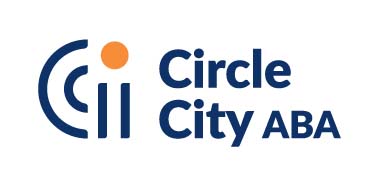When a child struggles to express their wants and needs, it can be frustrating for everyone, especially the child. At Circle City ABA, we work every day to help children communicate more effectively, building tools that support success at home, at school, and in the community.
Today, we’re excited to share one child’s story, a young girl who went from using only single words to requesting items in complete sentences. Her progress in just seven months is a reminder of how powerful support and consistency can be.
Kindly note: Therapy is a very personal experience, and, as with any other treatment, results are not uniform. Many factors determine if a child will benefit from therapy, including individual characteristics, the nature of their needs, and how well the child is receiving support at home and/or school.
Understanding How Communication Starts
When this child began therapy, she could label some objects, like saying “ball” or “juice.” But she didn’t yet have the skills to use functional communication, which means asking for what she wanted or needed in a way others could understand.
She couldn’t yet say, “I want juice” or “Can I play with the ball?” This often led to frustration. Like many children with autism, she needed help turning those single words into complete thoughts.
At Circle City ABA, we understand that communicating with children with autism can look different for every child. That’s why we meet each child where they are and build a plan just for them.
Building Communication Step by Step
Our team began by helping this child expand her language skills in a way that felt natural and fun. We used play, routines, and positive reinforcement to encourage more words and longer phrases.
For example, if she said “car,” we might model back “I want the car” or “Can I have the red car?” Over time, she started repeating these longer phrases on her own. With practice, she began using four or more words to ask for what she wanted—and she started doing it without being prompted.
Within just seven months, she went from using single words to speaking in complete sentences like:
- “I want to go outside.”
- “Can I have a snack, please?”
- “I want to play with the blocks.”
These small sentences opened big doors in her life.
Why Communication Progress Matters
Learning how to communicate with autism is about more than words. It’s about connection. It’s about confidence.
As this child’s ability to express herself grew, her frustration decreased. Smiles became more frequent. Engagement in activities increased. She also began showing greater independence. Her family could better understand her, and mealtimes, playtime, and everyday routines became easier and more joyful.
This progress didn’t happen overnight. It came from a supportive team, a custom therapy plan, and a lot of patience and practice. But the results were life-changing—not just for the child, but for her family, too.
Every Child Communicates in Their Own Way
Not all children follow the same path, and that’s okay. Some may use speech. Others may use signs, pictures, or devices. At Circle City ABA, we focus on what works best for each individual.
We celebrate every step forward, whether it’s a new word, a complete sentence, or even just a gesture that helps a child feel understood.
Ready to Help Your Child Communicate?
If your child is struggling to communicate, Circle City ABA is here to help.
Our therapy programs are built around real-life goals, like helping children express themselves more clearly. Contact our admissions team for more information on our services and how we can support you and your child. Find a location near you! We serve Arizona, Georgia, Indiana, Iowa, and Nebraska. Let’s work together to help your child communicate and find their voice.
Disclaimer: Every child is different. This story reflects one individual’s progress. Outcomes may vary based on many factors, including the child’s unique needs and the support they receive.



